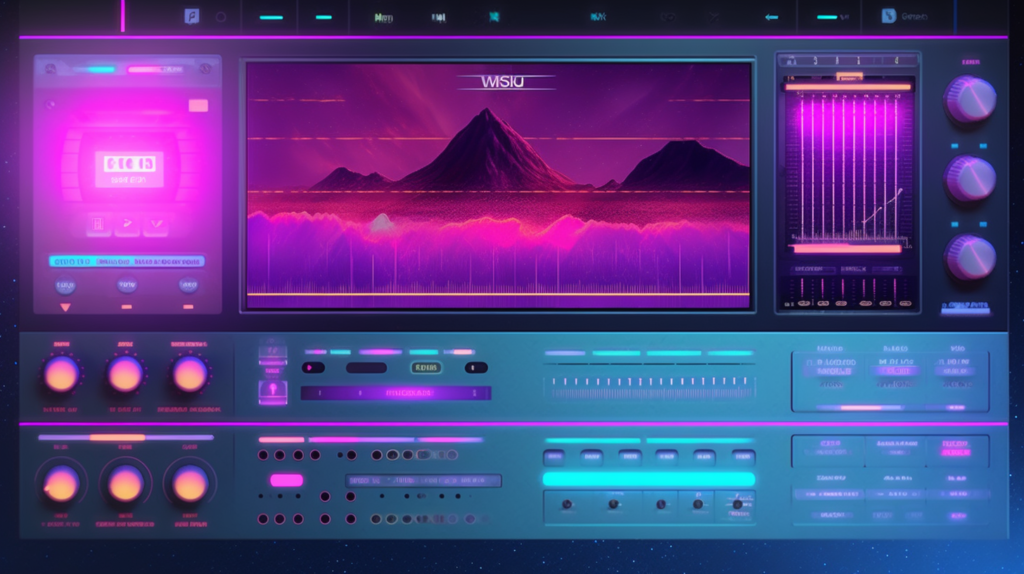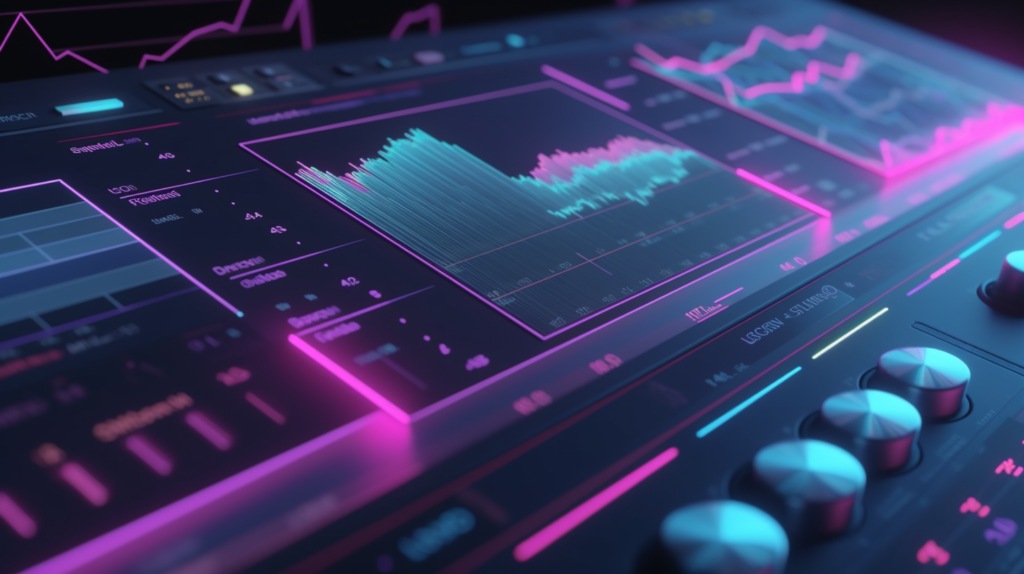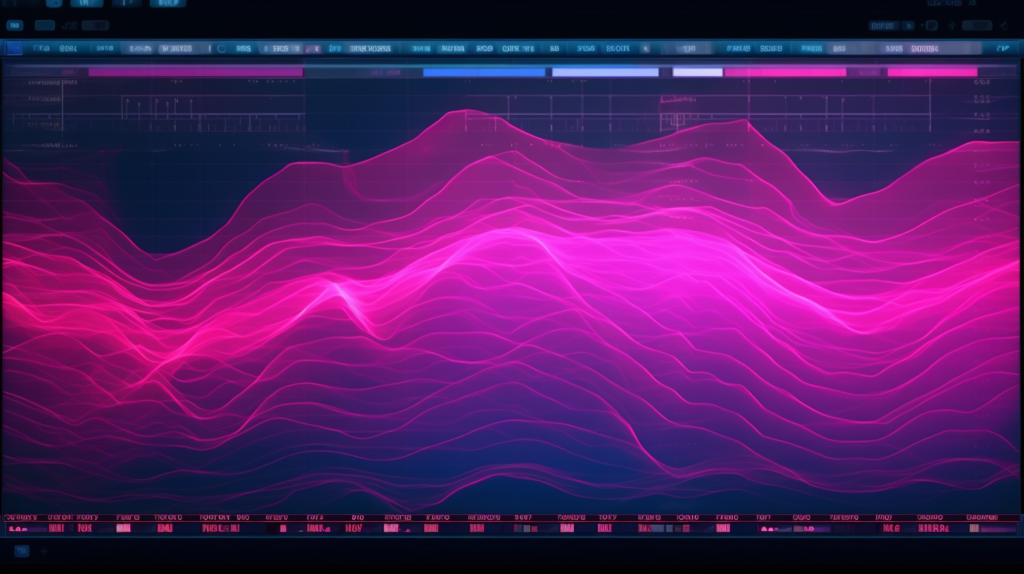Equalization (EQ) is one of the most critical tools in a music producer’s arsenal. It can make or break a mix, and it’s essential to understand its intricacies to create professional-sounding tracks. In this comprehensive guide, we’ll dive deep into EQ, discussing its importance, original and innovative techniques, and other relevant points to help you become an EQ master. Plus, we’ve included a cheatsheet for producers to refer back to whenever they need a quick reminder.

Why is Equalization (EQ) Important?
EQ is the process of adjusting the balance between different frequency components within an audio signal. It helps you achieve a clear and balanced mix by cutting or boosting specific frequency ranges. Here are some reasons why EQ is crucial:
- Clarity: EQ allows you to carve out space for each instrument, ensuring they don’t clash and compete for the same frequency range.
- Tonal Balance: Proper EQ helps create a balanced mix, preventing certain frequencies from overpowering others.
- Fixing Problems: EQ can be used to address issues in individual tracks or recordings, such as removing unwanted noise or resonances.
- Creative Expression: EQ can also be used creatively to shape the tone of a sound, adding character and depth.
Original and Innovative EQ Techniques
Here are some lesser-known EQ techniques that can elevate your music production skills:
1. Parallel EQ
Parallel EQ involves applying different EQ settings to duplicate tracks and blending them together. This technique allows you to enhance specific frequencies without affecting the original sound’s overall tonal balance. Here’s how to use parallel EQ:
- Create a duplicate of the track you want to process.
- Apply EQ settings to the duplicate, targeting the frequencies you wish to enhance or modify.
- Adjust the level of the duplicate track, blending it with the original to achieve the desired effect.
- Experiment with various EQ settings on the duplicate track, such as emphasizing the high frequencies to add brightness or boosting the low-mids for warmth.
2. Dynamic EQ
Dynamic EQ adjusts the gain of specific frequency bands based on the input signal’s level. It’s particularly useful when dealing with problematic frequencies that only occur at certain times or levels. Here’s how to use dynamic EQ:
- Identify the problematic frequency range within the track.
- Set up a dynamic EQ plugin with a band targeting the identified frequency range.
- Adjust the threshold so that the EQ only activates when the problematic frequency is prominent.
- Fine-tune the attack and release settings to achieve a transparent and natural-sounding effect.
3. Mid-Side EQ
Mid-Side EQ is an advanced technique that allows you to EQ the mid and side components of a stereo signal separately. This can help create a more spacious mix by enhancing the stereo image. Here’s how to use mid-side EQ:
- Use a mid-side EQ plugin on a stereo track or bus.
- Listen to the mid and side components individually to identify any imbalances or issues.
- Apply EQ adjustments to the mid or side channels as needed, such as cutting low frequencies from the side channel to create a cleaner stereo image.
- Maintain a natural-sounding mix by using subtle EQ changes and avoiding drastic cuts or boosts.
4. Match EQ
Match EQ involves analyzing the frequency response of a reference track and applying a similar EQ curve to your mix. This can be an effective way to achieve a professional sound by emulating the tonal balance of successful productions. Here’s how to use match EQ:
- Choose a reference track with a similar style and sound to your mix.
- Use a match EQ plugin to analyze the frequency response of the reference track.
- Apply the resulting EQ curve to your mix, either on the master bus or individual tracks.
- Fine-tune the applied EQ settings as needed, ensuring the adjustments don’t introduce unwanted artifacts or imbalances.
5. Frequency Juggling
Frequency juggling is a technique where you use automation to shift the EQ focus between instruments during a mix. This approach can create more dynamic and interesting mixes by allowing different elements to take center stage at different moments. Here’s how to use frequency juggling:
- Identify sections within your mix where different instruments should take precedence.
- Automate EQ adjustments for each instrument, emphasizing the desired frequencies during their spotlight moments.
- Ensure smooth transitions between EQ changes by using gradual automation curves and avoiding abrupt shifts.
- Be mindful of the overall mix balance, ensuring the frequency juggling doesn’t create excessive boosts or cuts in specific areas.
Best EQ Plugins for Music Producers
There are countless EQ plugins available, but here are some of the best options for music producers:
- FabFilter Pro-Q 3: A high-quality, versatile EQ plugin with an intuitive interface and excellent sound quality. The Pro-Q 3 offers up to 24 bands, dynamic EQ, and M/S processing, making it suitable for any music production task.
- iZotope Ozone 9 Equalizer: Part of the Ozone 9 mastering suite, this EQ plugin features a range of modern and vintage EQ models, giving you the flexibility to shape your mix with precision.
- Waves H-EQ Hybrid Equalizer: Combining the best of analog and digital EQ, the Waves H-EQ offers seven different EQ types, including a unique asymmetrical bell filter.
- TDR Nova: A versatile, free dynamic equalizer plugin with a transparent sound, perfect for those on a budget.
Pro Tips
- Always use a high-quality EQ plugin with minimal phase distortion to ensure the best possible sound.
- Be mindful of the “loudness bias” – when you boost a frequency, the perceived increase in loudness can trick you into thinking it sounds better. Always level-match when making EQ adjustments to make objective decisions.
- Train your ears by listening to professionally mixed music and comparing it to your mixes. Over time, you’ll develop a better understanding of what makes a balanced mix.
EQ Cheatsheet for Producers
| Technique | Purpose | Tips |
|---|---|---|
| Subtractive EQ | Remove problematic frequencies | Cut narrow, boost wide |
| Additive EQ | Enhance desired frequencies | Boost subtly, avoid over-processing |
| High-Pass Filter | Remove low-end rumble and mud | Apply to non-bass elements |
| Low-Pass Filter | Remove harsh high-end | Use on low-end instruments |
| Parallel EQ | Add depth and dimension | Blend processed and unprocessed signals |
| Dynamic EQ | Address frequency issues that change with level | Target problematic frequencies |
| Mid-Side EQ | Enhance stereo image | Use sparingly for a wider mix |
| Match EQ | Emulate the tonal balance of a reference track | Choose a suitable reference track |
| Frequency Juggling | Create dynamic and interesting mixes | Automate EQ to shift focus |
With this comprehensive guide and handy cheatsheet, you’ll be well on your way to mastering equalization (EQ) in your music production projects. Remember to be patient and practice your EQ skills, as the nuances can take time to learn. However, once you’ve honed your abilities, you’ll see a significant improvement in the clarity, balance, and overall quality of your mixes. Happy producing!





